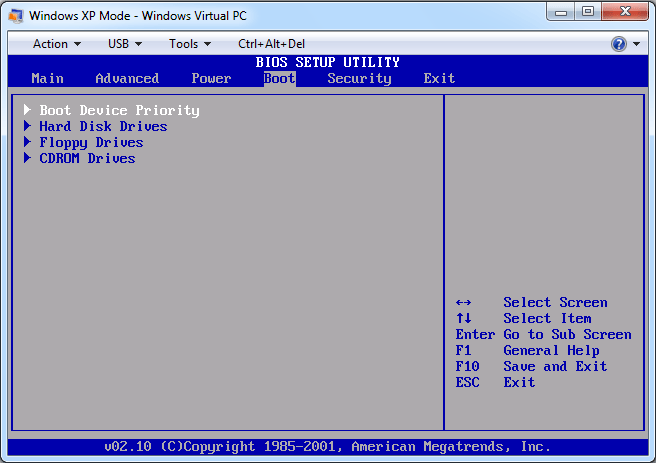Boot Win Xp
The Recovery Console is an advanced diagnostic mode of Windows XP with special tools that will allow you to restore the boot.ini file. When you reach the command line (detailed in Step 6 in the link above), type the following command and then press Enter. If your computer powers up okay, but the Windows XP operating system won't boot properly, you have some troubleshooting ahead of you. Here's a look at the likely. Easy instructions on repairing or replacing the boot.ini file in Windows XP. Issues with boot.ini can prevent Windows XP from starting properly. Dual Boot 10 with XP? Windows will install boot managers as needed so you don't need to play around with your BIOS settings to select an OS for boot up. Planet Hollywood Font - Free Software And Shareware here.
Use the procedures in this article to work around the problems that hinder your system from starting. Problems that can occur are (but not limited to) boot sector damage, missing files, a virus, improper drivers and so on. In this article this is what we cover. We cover some terminology and the boot process, possible problems and situations and then show you how to make a boot disk and use it. A non booting Server is not a good thing when it’s hosting a thousand web pages for a company.

I recommend this disk be created and kept nearby in case you are in a jam and need to get a system up and running that will not boot. 'For a complete guide to security, check out 'Security+ Study Guide and DVD Training System' from ' Terminology In this section we will cover terminology that will be used throughout the chapter and define it. • POST: Power On Self Test. When a computer starts or boots, the BIOS carries out a procedure that verifies that all the system's components are operating properly. Hearing beeps are indicators of a BIOS trying to either indicate a successful transition, or it’s giving you a beep code that helps you figure out a problem most likely in the BIOS. • MBR: Short for Master Boot Record, a small program that is executed when a computer boots up. Typically, the MBR resides on the first sector of the hard disk.
The program begins the boot process by looking up the partition table to determine which partition to use for booting • BIOS: An abbreviation for Basic Input/Output System. On PC systems, the BIOS is used to perform all necessary functions to properly initialize that system’s hardware when power is first applied. The BIOS also helps with the boot process. • CMOS: Complementary Metal Oxide Semiconductor.
A chip which uses small amounts of electricity. It is used typically on battery-powered computers and to save configuration information on other computers when they are turned off. Url2 Sifteam E1 Google more. Boot Process The boot process once understood will help you visualize why putting certain files on a floppy disk will help you so much. Let’s look at the boot process. Netviewer Kguard Download Pdf.
Click to visit. • The first thing that happens when you power on your PC is you have a POST. The POST stands for Power on Self Test and it tests your system hardware. • Hardware such as Memory is tested as well as all other hardware on the system being verified. This can usually be seen on the monitor as the system starts. • Once POST completes, the PC will attempt to locate a bootable device configured via the system BIOS/CMOS.
• Once the bootable device is found, the MBR (Master Boot Record) is loaded into memory • The MBR locates the active partition and loads the boot sector into memory. • The boot sector contains the code that starts Ntldr which is the boot strap loader for Windows XP. Ntldr must be located in root folder of the active partition along with Ntdetect.com, boot.ini, bootsect.dos (for dual booting) and Ntbootdd.sys (needed with some SCSI adapters) • The operating system is ‘selected’ by NTLDR. • NTLDR will use the Ntdetect.com, boot.ini, and bootsect.dos files to get the proper OS selected and loaded • The system starts in 16-bit real mode, then moves to protected mode at 32-bit. • Once NTLDR switches into 32-bit mode, the file system is loaded (NTFS, FAT32, etc) so that the boot.ini can be read and then checked. • Once the boot.ini is checked, you select the OS you would like to load. • Selecting XP from the boot menu causes Ntldr to run Ntdetect.com to get information about installed hardware.